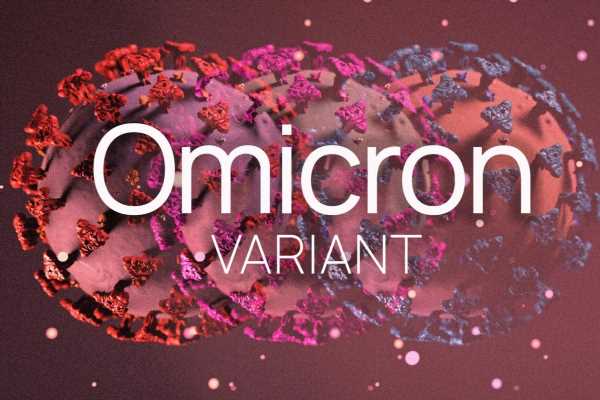A recent article posted to the bioRxiv* preprint server demonstrated that vascular inflammation leads to heightened severe acute respiratory syndrome coronavirus 2 (SARS-CoV-2) infection in perivascular cells.

Background
Blood vessels are composed of endothelial and perivascular cells. Pericytes are crucial for stabilizing blood vessels and the functioning of the vascular barrier. Pericytes and endothelial cells (ECs) harbor angiotensin-converting enzyme 2 (ACE2) receptor, the primary host interaction site of the SARS-CoV-2 spike 1 (S1) protein.
Numerous studies depicted the vascular consequences of SARS-CoV-2 infection and the role of pericytes in disease progression. Yet, the relevance of perivascular cells and inflammation in coronavirus disease 2019 (COVID-19) is unknown. Moreover, prior reports state a higher preference of SARS-CoV-2 for pericyte-binding than ECs in some organs.
However, it is unclear whether a previous vascular barrier disruption influences the binding of the SARS-CoV-2 particles to perivascular cells or ECs or not.
About the study
In the present work, the researchers hypothesized that in healthy vascular capillaries with an intact barrier function, SARS-CoV-2 has limited entry to perivascular cells, which results in controlled immune stimulation and minimal vascular damage. On the other hand, blood vessels with a compromised barrier function have an elevated rate of SARS-CoV-2 extravasation. Additionally, blood vessels with pro-inflammatory mediators such as tumor necrosis factor α (TNFα) present an altered functioning barrier.
Subsequently, the team tested the hypothesis by employing two well-known vascular capillary on-chip models. The authors improved the models by constructing endothelial capillaries backed with pericytes/perivascular cells derived from the mesenchymal stromal cells (MSC). The researchers assessed the impact of vascular inflammation on the selective adherence of the SARS-CoV-2 S1 protein to perivascular cells employing the models.
In the central chamber of the microfluidic device used to engineer the microphysiologic model of pericyte-supported microvasculature on-chip, the researchers planted a cell suspension in a collagen-fibrin hydrogel comprising encased human MSCs (hMSCs) and green fluorescent protein (GFP)-expressing human umbilical vein ECs (GFP-HUVECs), in a 4:1 HUVEC:hMSC ratio.
Results and discussions
The study results illustrated that the SARS-CoV-2 S1 protein was linked with both TNFα treated and untreated/control capillaries, yet the binding was more significant in TNFα-treated ones. TNFα-treated capillaries had an even distribution of the S protein continually colocalized with cells inside the perivascular region's extracellular matrix and the microvascular network. In contrast, control blood vessels had an uneven distribution of the S protein throughout the capillaries, with increased concentration at the junctions. In the perivascular area of control vessels, there were just a few S protein spots.
The control vessels demonstrated a thin endothelialized layer of ECs colocalized with perivascular cells showing a faint stain of the S protein attached to the vessel wall and in certain migrating cells inside the surrounding connective tissue. On the other hand, the S1 protein was mostly linked to delaminating perivascular cells in TNFα-treated samples. While no S1 proteins were observed outside the blood vessel in controls, TNFα treatment caused the loss of barrier function, allowing S1 proteins to pass through the endothelial barrier and remain outside the vessel.
The number of migrating perivascular cells was double in the cells exposed to TNFα relative to the controls. Furthermore, perivascular cells exposed to TNFα became large, developed migratory characteristics with stellate-shaped and elongated cytoplasm, with main activities parallel to the lengthy vascular axis, and many conspicuous filopodia directed outside the vessel, within the adjacent extracellular matrix.
Additionally, while the spatial correlation between S1 protein and GFP signal in controls was 0.9, TNFα-treated vessels exhibited a lower S1 protein and GFP spatial relationship, illustrating that the S1 protein distribution was substantially wider in inflamed vessels.
Conclusions
The study findings established a significant association between vascular function, inflammation, and perivascular cells. This association could impart a new understanding of the pathogenesis of SARS-CoV-2 infection and assist in justifying the extensive effects of the infection in several vascularized organs and tissues of the body.
The present study depicts a drastically higher adherence and extravasation of the SARS-CoV-2 S1 protein with perivascular cells of inflamed blood vessels than the healthy vessels. The S1 protein had increased access to perivascular domains with TNFα-facilitated inflammation. The study findings indicate that perivascular cells might be a possible target for addressing the worsened vascular consequences of people with inflammatory comorbidities during COVID-19.
*Important notice
bioRxiv publishes preliminary scientific reports that are not peer-reviewed and, therefore, should not be regarded as conclusive, guide clinical practice/health-related behavior, or treated as established information.
- Henning Gruell, Kanika Vanshylla, Michael Korenkov, Pinkus Tober-Lau, Matthias Zehner, Friederike Muenn, Hanna Janicki, Max Augustin, Philipp Schommers, Leif Erik Sander, Florian Kurth, Christoph Kreer, Florian Klein. (2022). Delineating antibody escape from Omicron variants. bioRxiv. doi: https://doi.org/10.1101/2022.04.06.487257 https://www.biorxiv.org/content/10.1101/2022.04.06.487257v1
Posted in: Medical Science News | Medical Research News | Disease/Infection News
Tags: ACE2, Angiotensin, Angiotensin-Converting Enzyme 2, Blood, Blood Vessel, Blood Vessels, Capillaries, Cell, CHIP, Collagen, Coronavirus, Coronavirus Disease COVID-19, covid-19, Cytoplasm, Enzyme, Fluorescent Protein, Hydrogel, Inflammation, Necrosis, Pericytes, Protein, Receptor, Respiratory, SARS, SARS-CoV-2, Severe Acute Respiratory, Severe Acute Respiratory Syndrome, Syndrome, TNFα, Tumor, Tumor Necrosis Factor, Vascular

Written by
Shanet Susan Alex
Shanet Susan Alex, a medical writer, based in Kerala, India, is a Doctor of Pharmacy graduate from Kerala University of Health Sciences. Her academic background is in clinical pharmacy and research, and she is passionate about medical writing. Shanet has published papers in the International Journal of Medical Science and Current Research (IJMSCR), the International Journal of Pharmacy (IJP), and the International Journal of Medical Science and Applied Research (IJMSAR). Apart from work, she enjoys listening to music and watching movies.
Source: Read Full Article
